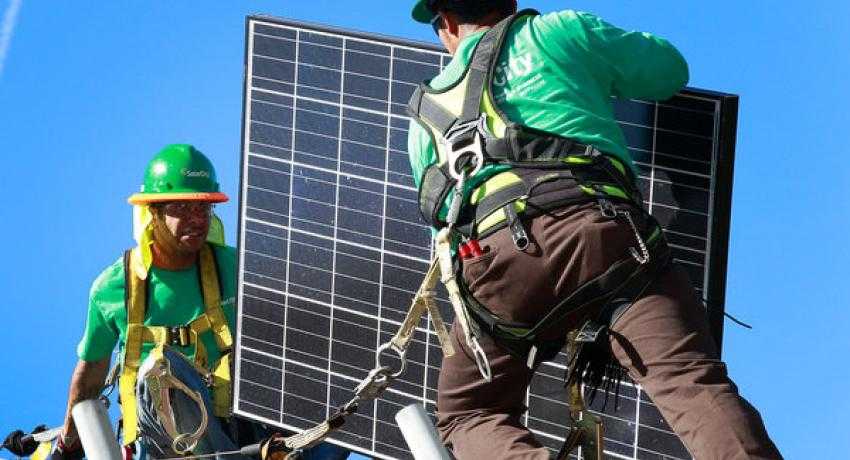SolarCity bond offering could catapult the company
Now that any ordinary person with $1,000 can invest in SolarCity’s solar bonds, the already-strong company could have access to nearly unlimited capital for continued growth and expansion.
SolarCity, the country’s largest solar installer, installs more than a third of all residential solar panels sold in the United States right now. And it only operates in 15 states.
When the company announced this week that it has established the nation’s first registered public offering of solar bonds, it was a blip on the Internet newsfeeds. But it could be tremendously impactful.
"This is very much part of the company's push to vertically integrate,” said Tim Newell, vice president of financial products for SolarCity.
This announcement falls on the heels of the launch of the company’s new solar loan program, which will eventually allow it to expand into states that don’t permit its third-party ownership model.
On top of that, SolarCity acquired Silevo, which has advanced solar technology, last year along with Paramount Solar and Zep Solar. And the company has plans to build the world’s largest solar panel manufacturing facility in an effort to reduce the cost of solar technology further – accelerating solar technology’s integration into the mainstream.
SolarCity grew rapidly because it made solar affordable. Its model doesn’t require any upfront payments and typically allows home and business owners to pay less for their clean energy per month than they would pay to the utility company.
The model is largely believed to be responsible for the solar industry’s explosive growth over the last five years.
But it’s a model that demands massive amounts of continuous capital. SolarCity is as much a finance company as it is a solar installer. If it’s going to grow, it needs new sources of affordable capital that can help keep the cost of its products low for consumers.
Selling solar bonds that pay individual investors 2 to 4 percent returns accomplishes that goal. It offers higher returns than a saving account, CD or money market account and cuts out the middle man that would increase borrowing costs for SolarCity.
“It will attract a wider pool of investors and should allow us to get the lowest cost capital,” Newell said. “Reducing the cost of capital goes directly to reducing the cost of solar.”
SolarCity acquired financial technology firm Common Assets in January. Newell was that company’s CEO and was immediately tasked with finding a way for average consumers to invest directly in solar bonds when he joined SolarCity.
SolarCity is not the first to offer direct investment opportunities in solar projects. Mosaic, known for crowdfunding individual solar projects, launched in 2010 and was able to open investment opportunities to average investors in 2013.
SolarCity’s bonds are different, in that investors won’t choose a specific SolarCity project or geographic area to fund. The bonds will generally support the company’s solar financing products.
The timing of SolarCity’s announcement coincides well with a growing movement toward socially responsible investing. As dozens of national and international institutions divest from fossil fuels, SolarCity is offering up an option that – at least in theory – is less risky than a direct stock investment. That timing, combined with the bonds being the only investment vehicle of their kind, could make them even more attractive than predicted – spurring growth for SolarCity.
The company is clearly lining up the dominoes. From solar technology to manufacturing, financing, installation and now direct funding, the pieces are falling into place for SolarCity to realize phenomenal growth.
Of course, if the company fails, it’s not just government or institutional investor money at stake anymore – it’s college funds and retirement accounts.




